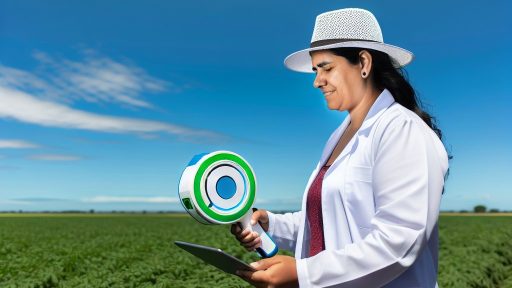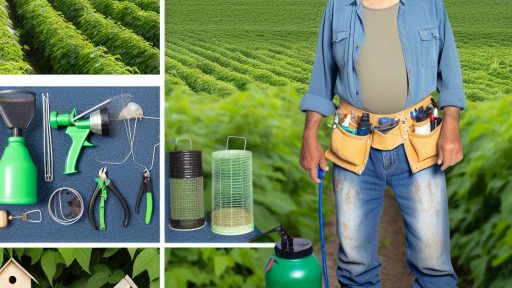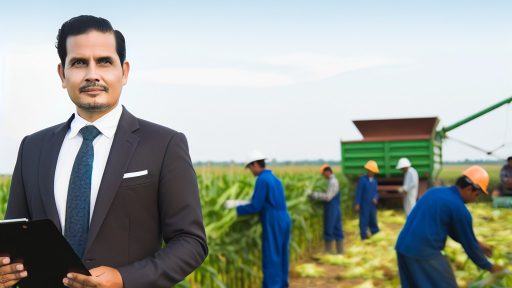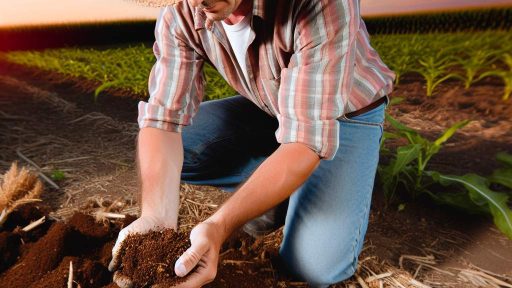Introduction to Farm Supply Chain Optimization and Its Importance
Farm supply chain optimization is crucial for agricultural success.
This process streamlines the flow of goods from producers to consumers.
It enhances efficiency, reduces costs, and improves product quality.
In addition, an optimized supply chain can lead to higher profitability.
Farmers face numerous challenges in today’s complex market environment.
These challenges include fluctuating demand and unpredictable weather patterns.
Technology plays a significant role in overcoming these obstacles.
Farmers can utilize advanced tools to manage their supply chains effectively.
Such tools include data analytics, inventory management systems, and IoT devices.
Data analytics provides farmers with insights into market trends and consumer preferences.
Inventory management systems help maintain optimal stock levels throughout the year.
IoT devices allow for real-time monitoring of crops and equipment.
These technologies not only enhance transparency but also improve decision-making.
Effective communication within the supply chain is essential.
Farmers need to collaborate with suppliers, distributors, and retailers.
Transform Your Agribusiness
Unlock your farm's potential with expert advice tailored to your needs. Get actionable steps that drive real results.
Get StartedThis collaboration fosters trust and ensures timely deliveries of products.
By integrating technology, the entire supply chain becomes more resilient.
Ultimately, optimizing the farm supply chain benefits all stakeholders involved.
As agriculture evolves, continuous adaptation and improvement are vital.
This journey toward optimization requires commitment and innovation.
The future of farming depends on how effectively we leverage technology.
Overview of Current Challenges in the Agricultural Supply Chain
Disjointed Communication
The agricultural supply chain often suffers from poor communication.
Farmers, suppliers, and distributors struggle to share critical information.
This disconnection leads to inefficiencies and delays in production.
Moreover, it complicates decision-making across the supply chain stages.
Transportation Complexities
Transportation issues frequently disrupt the flow of goods.
Farm produce can spoil during long transit times.
Inadequate infrastructure exacerbates these transportation challenges.
As a result, farmers face increased costs and decreased revenues.
Inventory Management
Inventory management presents another significant challenge.
Farmers often have insufficient tools for tracking inventory levels.
This shortfall can lead to overproduction or stock shortages.
Consequently, farmers struggle to meet market demands effectively.
Market Access and Pricing
Gaining market access proves difficult for many farmers.
They often lack information on market prices and trends.
This knowledge gap hinders their ability to make informed selling decisions.
Consequently, they may sell their products at a loss or excess profit.
Regulatory Compliance
Farmers face numerous regulations that vary by region.
Navigating these regulations can be time-consuming and costly.
Showcase Your Farming Business
Publish your professional farming services profile on our blog for a one-time fee of $200 and reach a dedicated audience of farmers and agribusiness owners.
Publish Your ProfileFailure to comply can result in fines and operational setbacks.
This added pressure limits farmers’ ability to focus on production.
Climate Change Impacts
Climate change poses a direct threat to agricultural production.
Extreme weather events disrupt planting and harvesting schedules.
Increased pests and diseases further exacerbate these challenges.
Farmers must adapt quickly to these changing conditions.
Role of Data Analytics in Supply Chain Decision Making
Understanding Data Analytics
Data analytics refers to examining data sets to draw conclusions.
It involves various techniques to analyze and interpret complex data.
This process helps businesses make informed decisions.
Enhancing Operational Efficiency
Data analytics improves operational efficiency in supply chains.
It identifies bottlenecks and inefficiencies in processes.
For instance, farmers can adjust schedules based on performance metrics.
Forecasting Demand and Supply
Accurate forecasting is critical for managing supplies effectively.
Predictive analytics can help forecast demand patterns.
Using historical data, companies can anticipate upcoming needs.
In turn, this reduces excess inventory costs.
Optimizing Inventory Management
Inventory management relies heavily on accurate data analytics.
Businesses can avoid stockouts and overstock situations.
Analytics provides insights into optimal stock levels.
As a result, companies streamline their inventory processes.
Improving Traceability and Compliance
Traceability is crucial in the agricultural supply chain.
Data analytics enhances transparency across the production process.
This improvement aids in tracking products from farm to table.
Additionally, it ensures compliance with food safety regulations.
Supporting Strategic Decision Making
Strategy development benefits from data analysis and insights.
Decision-makers can evaluate market trends more effectively.
With data, managers can assess risks linked to supply chain disruptions.
Consequently, organizations can devise better contingency plans.
Facilitating Collaboration Among Stakeholders
Data analytics fosters collaboration among supply chain partners.
Moreover, sharing data optimizes collective decision-making efforts.
This collaboration enhances overall supply chain performance.
Utilizing Advanced Technologies
Advanced technologies bolster the role of data analytics.
Artificial intelligence and machine learning offer powerful tools.
These technologies analyze vast amounts of data quickly.
They uncover insights that humans might miss.
Case Studies of Successful Implementation
Many companies successfully leverage data analytics.
For example, Green Valley Farms analyzed customer buying patterns.
This analysis improved their crop production decisions.
Similarly, Fresh Market used data to optimize their supply routes.
Future Trends in Data Analytics
The future of data analytics in agriculture looks promising.
Showcase Your Farming Business
Publish your professional farming services profile on our blog for a one-time fee of $200 and reach a dedicated audience of farmers and agribusiness owners.
Publish Your ProfileEmerging technology will continue to evolve analytics capabilities.
Furthermore, the integration of IoT devices will enhance data collection.
As a result, more precise decision-making becomes achievable.
Learn More: Succession Planning For Long-Term Farm Financial Health And Growth
Implementing IoT Devices for Real-Time Monitoring of Supply Chain
Connecting Devices for Enhanced Visibility
IoT devices enable farmers to connect their equipment and assets.
These devices provide real-time data on crop conditions and resource usage.
This connection improves visibility across the supply chain.
By utilizing sensors, farmers can track moisture levels and temperature.
Benefits of Real-Time Data
Real-time data enhances decision-making processes for farmers.
Farmers can promptly address issues such as pest infestations.
Additionally, this data helps optimize irrigation schedules to save water.
Thus, farmers achieve higher efficiency and lower operational costs.
Integrating IoT with Existing Systems
Integrating IoT devices with traditional farming systems is crucial.
This integration allows seamless data flow and improved analytics.
Farmers can use software platforms to visualize this data effectively.
Moreover, integration fosters collaboration among supply chain partners.
Real-World Examples of IoT in Farming
Several farms have successfully implemented IoT solutions.
For instance, GreenFields Farm uses sensors to monitor soil health.
This data helps them make informed decisions about crop rotation.
Similarly, Sunny Acres Vineyard uses IoT for tracking grape quality.
Challenges and Solutions
Implementing IoT devices presents challenges such as high initial costs.
However, farmers can leverage grants and subsidies to reduce expenses.
Moreover, ensuring data security is a critical concern.
Farmers should invest in robust cybersecurity measures to protect their data.
See Related Content: Diversification and Biodiversity: Benefits for Modern Farms
Benefits of Blockchain Technology for Traceability and Transparency
Enhanced Traceability
Blockchain technology significantly improves traceability in the agricultural supply chain.
It records every transaction securely and immutably.
This ensures that each product can be tracked from farm to table.
As a result, stakeholders can verify the origin of their food products.
This transparency builds trust among consumers and suppliers.
Increased Accountability
With blockchain, all parties in the supply chain are held accountable for their actions.
Each participant has a unique digital signature, enhancing responsibility.
Consequently, this prevents fraudulent activities and mislabeling.
Farmers can prove the quality and safety of their products easily.
Streamlined Processes
Blockchain simplifies documentation and record-keeping in the supply chain.
It reduces paperwork, which often leads to errors and delays.
This streamlining results in faster transactions and reduced operational costs.
Moreover, real-time data access allows for quick decision-making.
Improved Consumer Confidence
Consumers increasingly demand transparency regarding food sources.
Blockchain satisfies this demand by providing verifiable product histories.
Showcase Your Farming Business
Publish your professional farming services profile on our blog for a one-time fee of $200 and reach a dedicated audience of farmers and agribusiness owners.
Publish Your ProfileThis information can be accessed via scanning QR codes on packaging.
Consumers gain insights into farming practices, processing methods, and distribution.
Such transparency fosters stronger relationships between consumers and producers.
Facilitating Compliance
Regulations regarding food safety continue to tighten globally.
Blockchain aids in demonstrating compliance with these regulations.
It provides a comprehensive audit trail for inspections and certifications.
As a result, stakeholders can respond quickly to regulatory changes.
This ensures sustainability and longevity in the marketplace.
Delve into the Subject: Integrating IoT Devices In Contemporary Agriculture
Leveraging AI and Machine Learning for Demand Forecasting
Introduction to Demand Forecasting
Demand forecasting is critical for efficient farming operations.
Accurate predictions enable better decision-making across the supply chain.
AI and machine learning significantly enhance forecasting accuracy.
The Role of AI in Forecasting
AI algorithms analyze vast datasets from various sources.
They identify patterns that humans may overlook.
This capability leads to more precise demand predictions.
Benefits of Machine Learning Techniques
Machine learning adapts to new data seamlessly.
This adaptability improves forecasts over time.
Consequently, farmers can adjust their production strategies effectively.
Data Sources for Accurate Forecasting
Diverse datasets are crucial for reliable demand forecasting.
Weather data significantly impacts crop yield predictions.
Market trends provide insights into consumer behavior.
Historical sales data helps understand past demand patterns.
Combining these datasets enhances forecasting models.
Implementation Strategies
Implementing AI-driven forecasting requires careful planning.
First, assess existing data collection practices.
Next, choose appropriate machine learning algorithms.
Regularly update the forecasting models with fresh data.
Training staff to interpret AI insights is vital.
Challenges and Considerations
Data quality is essential for successful implementation.
Inaccurate or incomplete data leads to flawed predictions.
Moreover, resistance to change can hinder adoption.
Therefore, engaging stakeholders is crucial for success.
Case Study: Green Fields Farm
Green Fields Farm implemented AI in their forecasting process.
They integrated weather data, historical sales, and market trends.
As a result, they improved their yield predictions by 30%.
This success story illustrates the power of AI in agriculture.
Learn More: Sustainable Farming Innovations For Higher Productivity

Utilizing Drones for Efficient Inventory Management and Crop Monitoring
Introduction to Drone Technology in Agriculture
Drones are revolutionizing the agricultural landscape.
They offer innovative solutions for inventory management and crop monitoring.
Farmers are increasingly adopting this technology for efficiency.
Showcase Your Farming Business
Publish your professional farming services profile on our blog for a one-time fee of $200 and reach a dedicated audience of farmers and agribusiness owners.
Publish Your ProfileEnhancing Inventory Management
Drones significantly streamline inventory management processes.
They provide real-time data on stock levels across vast areas.
This capability allows farmers to make informed decisions quickly.
Moreover, drones can identify crop health and growth stages.
Thus, they help in predicting harvests with better accuracy.
Data Collection and Analysis
Drones collect valuable data from fields easily and quickly.
They use high-resolution cameras and sensors for detailed imagery.
This data is crucial for assessing inventory levels effectively.
Furthermore, farmers can analyze the data to optimize resource use.
Cost and Time Efficiency
By automating inventory checks, drones reduce labor costs.
They also significantly cut down the time required for manual assessments.
This efficiency allows farmers to focus on critical tasks.
Improving Crop Monitoring
Drones enhance traditional crop monitoring practices.
They enable continuous surveillance of crops over large areas.
This technology identifies issues early, such as pests or diseases.
Consequently, farmers can take prompt action to protect their yields.
Precision Agriculture
Drones contribute to precision agriculture methodologies.
They help in mapping fields and optimizing input application.
Farmers can apply fertilizers and pesticides more precisely.
This targeted approach minimizes waste and environmental impact.
Yield Estimation
Another advantage of using drones is yield estimation.
Drones provide aerial imagery that assists in predicting outputs.
This data aids farmers in planning for storage and sales.
Consequently, it enhances financial forecasting and resource allocation.
Implications of Drone Technology in Agriculture
Drones are transforming inventory management and crop monitoring.
They enhance efficiency, accuracy, and productivity for farmers.
As technology advances, the role of drones in agriculture will continue to grow.
Farmers who invest in this technology position themselves for future success.
Case Studies: Successful Technology Implementations in Farm Supply Chains
Improving Inventory Management with IoT
FarmTech Innovations utilized IoT sensors to enhance their inventory management.
They tracked real-time stock levels in their warehouses.
This provided instant data on product availability and spoilage rates.
Consequently, they minimized waste and improved order accuracy.
The results included a 30% reduction in overstock situations.
Streamlining Logistics with AI
Agricore Solutions implemented AI-driven logistics software to optimize delivery routes.
This technology analyzed traffic patterns and weather conditions.
As a result, they reduced delivery times by an average of 15%.
The efficiency gains led to cost savings on fuel and labor.
Farmers reported increased satisfaction due to timely deliveries.
Enhancing Crop Monitoring with Drone Technology
Green Fields Agro adopted drone technology for crop monitoring and data collection.
They conducted aerial surveys to assess crop health efficiently.
Showcase Your Farming Business
Publish your professional farming services profile on our blog for a one-time fee of $200 and reach a dedicated audience of farmers and agribusiness owners.
Publish Your ProfileThe drones provided detailed data on pest infestations and irrigation needs.
Subsequently, farmers made informed decisions on treatments and resources.
The technology resulted in a notable increase in yield by 20% for certain crops.
Integrating Blockchain for Traceability
Harvest Link implemented blockchain technology to enhance traceability in their supply chain.
This allowed them to track products from farm to plate seamlessly.
Consumers benefited from knowing the origin of their food products.
Moreover, it built trust with retailers and increased sales.
Ultimately, this technology improved accountability among supply chain partners.
Utilizing Predictive Analytics for Demand Forecasting
AgriPredict utilized predictive analytics for improving demand forecasting accuracy.
They analyzed historical sales data and market trends.
This led to optimized planting schedules for farmers.
As a result, they aligned production with actual market demand.
The increased alignment reduced surplus and improved profitability.
Future Trends in Technology and Their Potential Impact on Farming Supply Chains
Emerging Technologies Transforming Agriculture
Technological advancements dramatically change the agricultural landscape.
Data analytics tools provide insights for better decision-making.
Additionally, precision agriculture improves crop yields and resource efficiency.
Farmers increasingly adopt drones for aerial monitoring and analysis.
Robotics and automation streamline labor-intensive tasks, reducing costs.
Furthermore, blockchain technology enhances transparency and traceability.
The Rise of Artificial Intelligence
Artificial intelligence plays a crucial role in farming supply chains.
AI algorithms analyze large datasets to optimize farming practices.
Machine learning predicts weather patterns, informing planting strategies.
Smart sensors collect real-time data, enhancing operational efficiency.
Moreover, AI-driven analytics help in demand forecasting and inventory management.
Sustainability Through Technological Innovation
Technology fosters sustainable farming practices.
Smart irrigation systems conserve water by utilizing sensor technology.
Vertical farming reduces land use while maximizing production.
Further innovations yield environmentally friendly pest control solutions.
These advancements mitigate the impact of agriculture on climate change.
The Role of Connectivity
Improved connectivity changes how farmers interact with supply chains.
Internet of Things (IoT) devices allow for seamless data sharing.
This connectivity enables real-time monitoring of supply chain activities.
Farmers can efficiently coordinate with suppliers and distributors.
Consequently, faster response times enhance overall supply chain resilience.
Collaboration and Partnerships
Collaboration among tech companies and farmers accelerates innovation.
Partnerships facilitate knowledge sharing and adoption of new technologies.
For instance, agritech startups provide specialized tools and solutions.
Industry stakeholders work together to address common challenges.
Such collaboration ensures that advancements benefit the entire agricultural sector.
Additional Resources
U.S. Agriculture Innovation Strategy Directional Vision for Research
Showcase Your Farming Business
Publish your professional farming services profile on our blog for a one-time fee of $200 and reach a dedicated audience of farmers and agribusiness owners.
Publish Your ProfileThe Impact of Digital Solutions on Grain and Biofuel Supply Chains –




